Avoid regrets! Crashes happen, but you can prevent injuries. Make sure that quick trip to school or a playdate doesn’t send your child to the hospital. Our guide gives you the best taxi-friendly car seat and booster recommendations and how-to guides on traveling safely around the city.
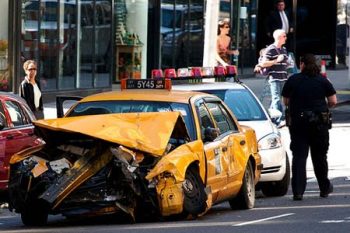
Always wear your seat belt. Never let anyone ride unrestrained. A seat belt is ALWAYS better than nothing. Restrained passengers are 3 times MORE likely to die if one person in the car is not restrained as the unrestrained person becomes a human missile.
Never wear a child in a taxi. A Baby Bjorn, Ergo, etc is NOT a car seat.
Never buckle two people in one seat belt. Things in a crash weigh their weight times the G-forces in the crash. A typical 30mph crash has about 25 G’s – which means a 150 pound adult will weigh 150 x 25 = 3,750lbs. This nearly 4,000 pound adult will crush the child sitting on their lap or carried on their chest.
Never put the shoulder belt behind the child’s back or under the arm. This removes all head & chest protection & significantly increases the risk for brain and spinal cord and abdominal organ injuries.
Infant seats, when used without the base, are convenient for travel because they’re so portable! Just click the carrier into the stroller and you’re on your way. For parents who will be taking taxis, Ubers, or flying frequently we recommend getting an infant seat with the highest capacity, so you can use it for as long as possible. Once your child outgrows their infant seat, taxi travel becomes A LOT more challenging.
The following infant seats come with a carrier and a base, so make sense for families who have their own vehicle. You will leave the base installed in your car, and use the carrier on the base in your car, or in a taxi or rental car or airplane without the base, or on the stroller.
The following infant seats come with a carrier and a base, so make sense for families who have their own vehicle. You will leave the base installed in your car, and use the carrier on the base in your car, or in a taxi or rental car or airplane without the base, or on the stroller.
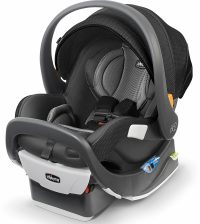
Chicco Fit2: Best infant seat in terms of longevity, because it will fit a child who is 75th% in height until their 2nd birthday. (Note that all kids are too tall for their infant seat, long before too heavy.) The Fit2 works on a wide variety of stroller frames and installs with the European belt path for a faster, more secure, and safer installation.
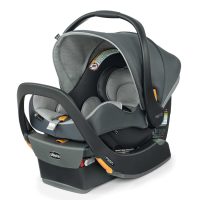
Chicco Keyfit35: Runner up infant seat in terms of longevity. The Keyfit35 is very similar to the Fit2, but more lightweight and easier to maneuver. It won’t last quite as long as the Fit2 though. Works on a wide variety of stroller frames and installs with the European belt path for a faster, more secure and safer installation.
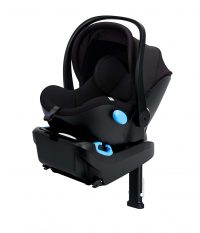
Clek Liing: Runner up infant seat in terms of longevity. The Liing is lightweight and easy to maneuver. The Liing works on a wide variety of stroller frames and installs with the European belt path for a faster, more secure, and safer installation.
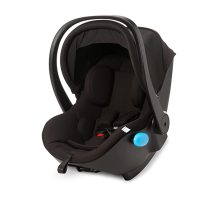
Clek Liingo: This is the same carrier as the Liing, sold without the base and with some additional travel items like a lower anchor strap and compartment. The Liingo is lightweight and easy to maneuver and works on a wide variety of stroller frames. It installs with the European belt path for a faster, more secure, and safer installation. Perfect for families that don’t own a car and therefore don’t need a base.
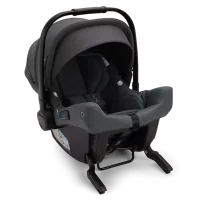
Nuna Pipa Urbn: This lightweight infant carrier installs in a snap with semi-rigid lower anchors. It’s only 7 lbs and super portable. However, it works only with select Nuna strollers and has low height and weight limits (29 inches, 22 lbs).
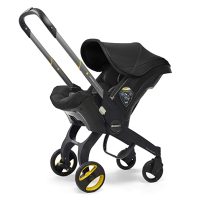
Doona: This stroller and car seat combo works best for families who don’t have their own vehicle. It installs using the European routing path. Not a lightweight product at 17 lbs (+ weight of the baby) but reduces stress since you don’t have to juggle a separate stroller on your outing. Note: Beware of fake Doonas—see here for how to make sure you’re getting the real thing.
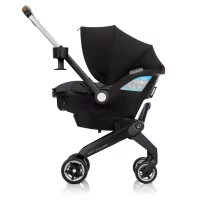
Evenflo Shyft Dualride: A stroller/car seat combo that comes with an optional base. Wheels can be left in the base in the car, and carrier brought inside separately, and carrier + wheels can be used on their own without the base. When used without the base, it installs using the European routing path. Not a lightweight product at 19 lbs (+ weight of the baby) but reduces stress since you don’t have to juggle a separate stroller on your outing.
Every infant seat in the US (except the Nuna Pipa LITE & LITE LX) can be installed without the base. The vehicle’s seat belt will take one of two paths around the infant seat – an American or European belt path.
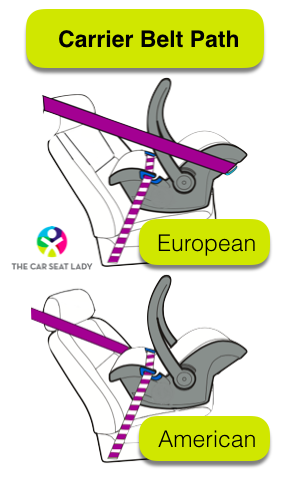
The American belt path doesn’t really use the shoulder belt – it’s just the lap belt holding the car seat tight. But there’s a reason all cars now have shoulder belts, not just lap belts: shoulder belts offer added protection compared to just a lap belt! A European belt path wraps the shoulder belt around the carrier, giving the car seat a tight hug, which keeps the baby’s head and neck safer in a crash. If you’re in the market for a new infant seat, click here for a list of infant seats with a European belt path.
Note: If you have the Cybex CloudQ, Doona, or Peg Perego 4-35/4-35 Nido the “tipping trick” won’t work, and you instead want to learn the trick shown in this video.
It’s harder to travel with a convertible car seat because they tend to weigh more and are usually not stroller compatible. Therefore, we recommend using your infant carrier for as long as possible, until your child is too tall or too heavy for it (whichever comes first), before transitioning to a rear-facing convertible car seat for travel.
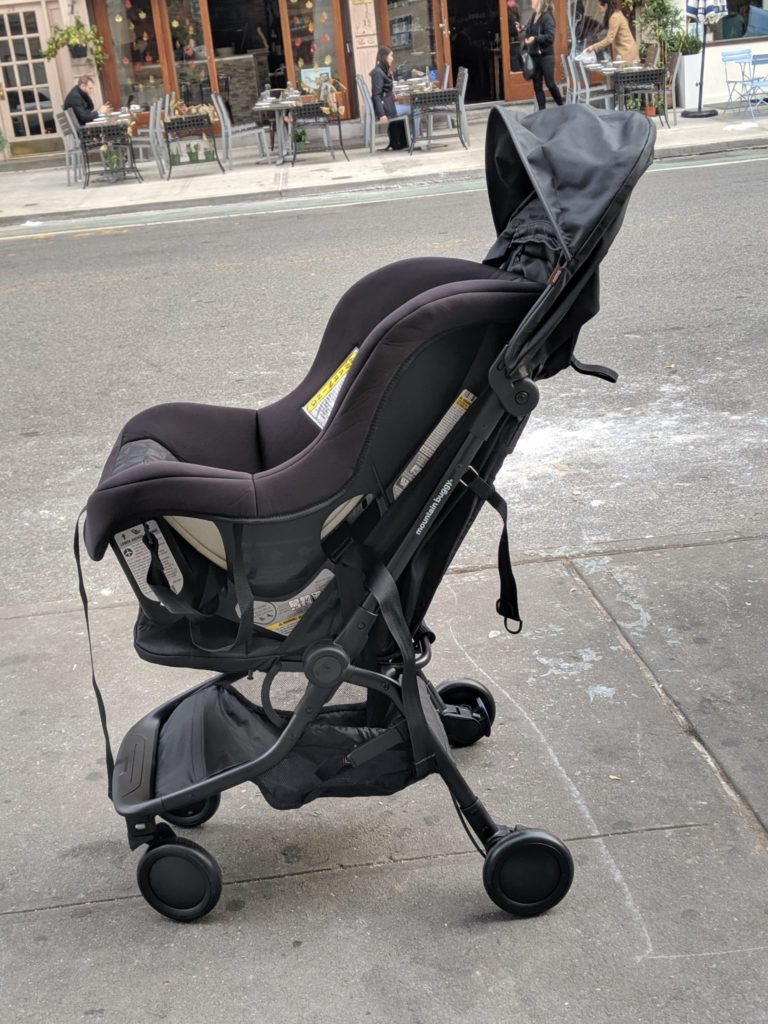
Cosco Scenera NEXT: Cheapest, lightest convertible seat (<8lbs.) Challenging to install securely, so be sure to practice before hitting the road. But a car seat, even when loosely installed, is still MUCH, MUCH safer than no car seat. The Scenera NEXT is likely to be much more loosely installed than other seats (especially with a seat belt install). However, the Scenera NEXT is much more likely to find its way into a taxi or Uber than other convertible seats because of how light it is.
The Scenera NEXT fits on the Mountain Buggy Nano stroller when oriented forward-facing with the Nano car seat attachment strap going through the forward-facing belt path. It fits in larger stroller baskets too (like the Uppababy Vista). You can also hang it from a hook on the handlebar of your stroller — clunky, but it works in a pinch.
Not Recommended: Lily Gold Sit ‘n Stroll. We do NOT recommend this seat because it’s impossible to install properly in nearly every situation. When used rear-facing there’s not enough room to physically fit a child’s legs under the vehicle lap belt or LATCH belt. When used forward-facing, the vehicle lap belt or LATCH belt compresses into the child’s chest due to the seat’s design.
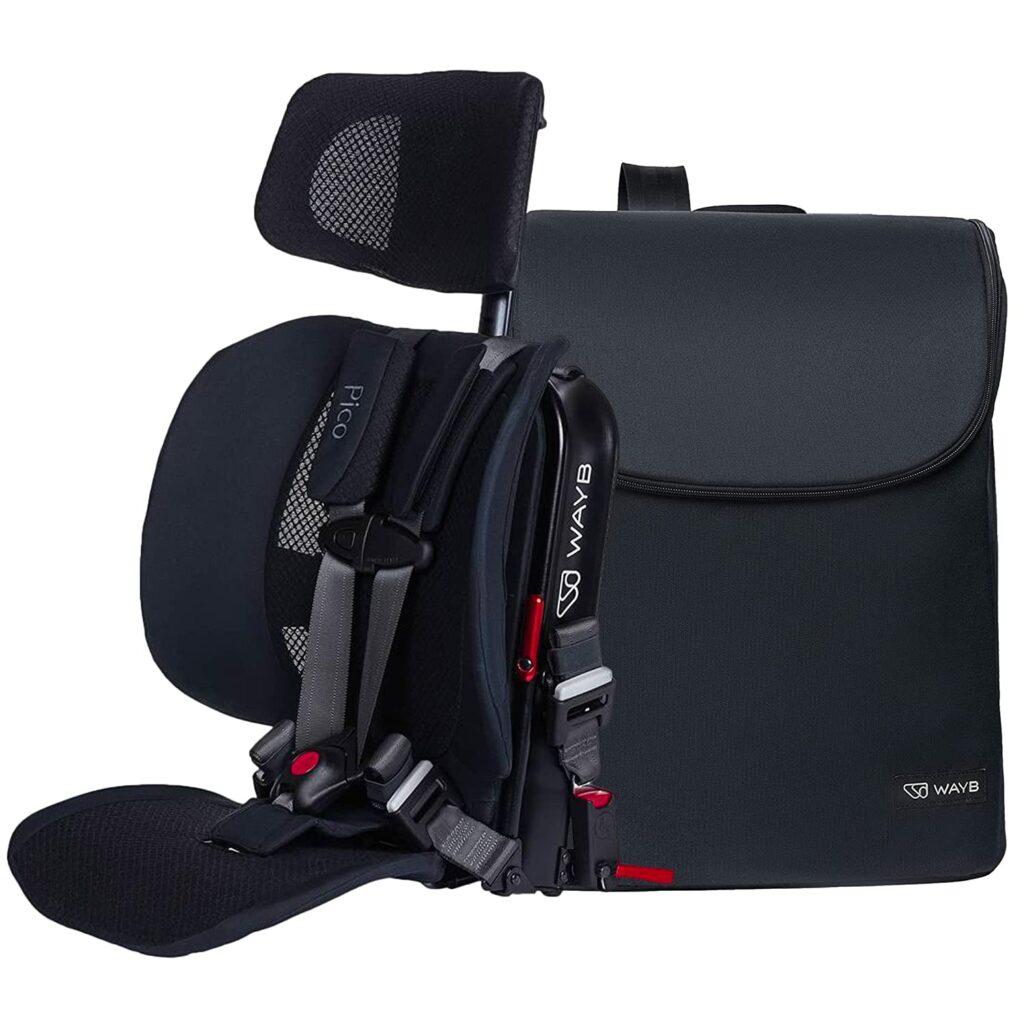
Wayb Pico: This is a forward-facing-only car seat with a 5-point harness up for children from 22 to 50 pounds and from 30 to 45 inches. Installs with LATCH (lower anchors AND top tether) or seat belt and top tether. LATCH installation is easier and often tighter. Weighs 8 pounds and fits in its own travel bag. Minimum age for use is 1 year, but Wayb recommends use for 2 years and up.
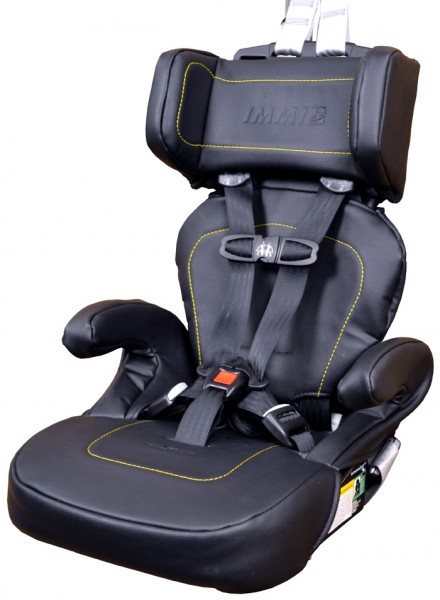
IMMI Go: This is a forward-facing-only car seat with a 5-point harness up to 55 pounds. Installs with LATCH (lower anchors AND top tether) in under 90 seconds. Weighs 10 pounds and fits in its own travel bag. Note: it can’t be used on a plane since planes don’t have tether anchors, but it does fit nicely in the overhead bin. See our videos and tips on installing and using the Go.
Do you really need to bring a booster with you? YES! Most kids need a booster seat, even in taxis and ubers, until ages 10 to 12. Your child can ride safely without a booster only when they can pass the 5-step-test.
Boosters keep the seat belt properly positioned over a child’s hip bones. Big kids are 55% safer in a booster compared to just the seat belt. Best of all, boosters do not require any installation.
If you find yourself in a car without a booster, don’t make a bad situation worse by putting the seat belt in the wrong place. ALWAYS use the shoulder belt across the chest – never under the arm or behind the back. ALWAYS keep the lap belt low and flat on the thighs and make sure the child is not slouching.
The shoulder belt plays an important role in a crash restraining your child’s chest and helping to prevent the head from hitting hard parts of the car like the back of the front seat or the door. With the shoulder belt in the wrong place, the body jackknifes over itself which also causes the lap belt to slide up over the hip bones and into the soft belly, where it causes significant damage to internal organs.
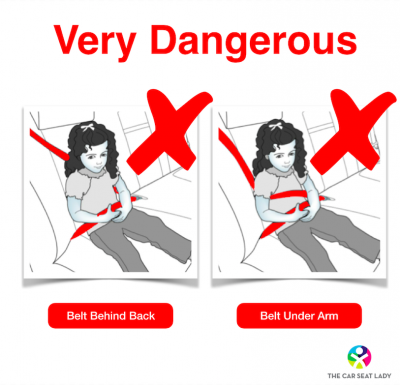
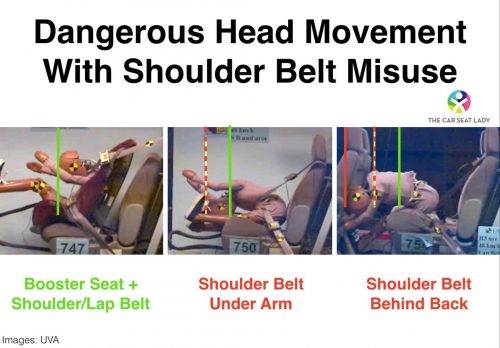
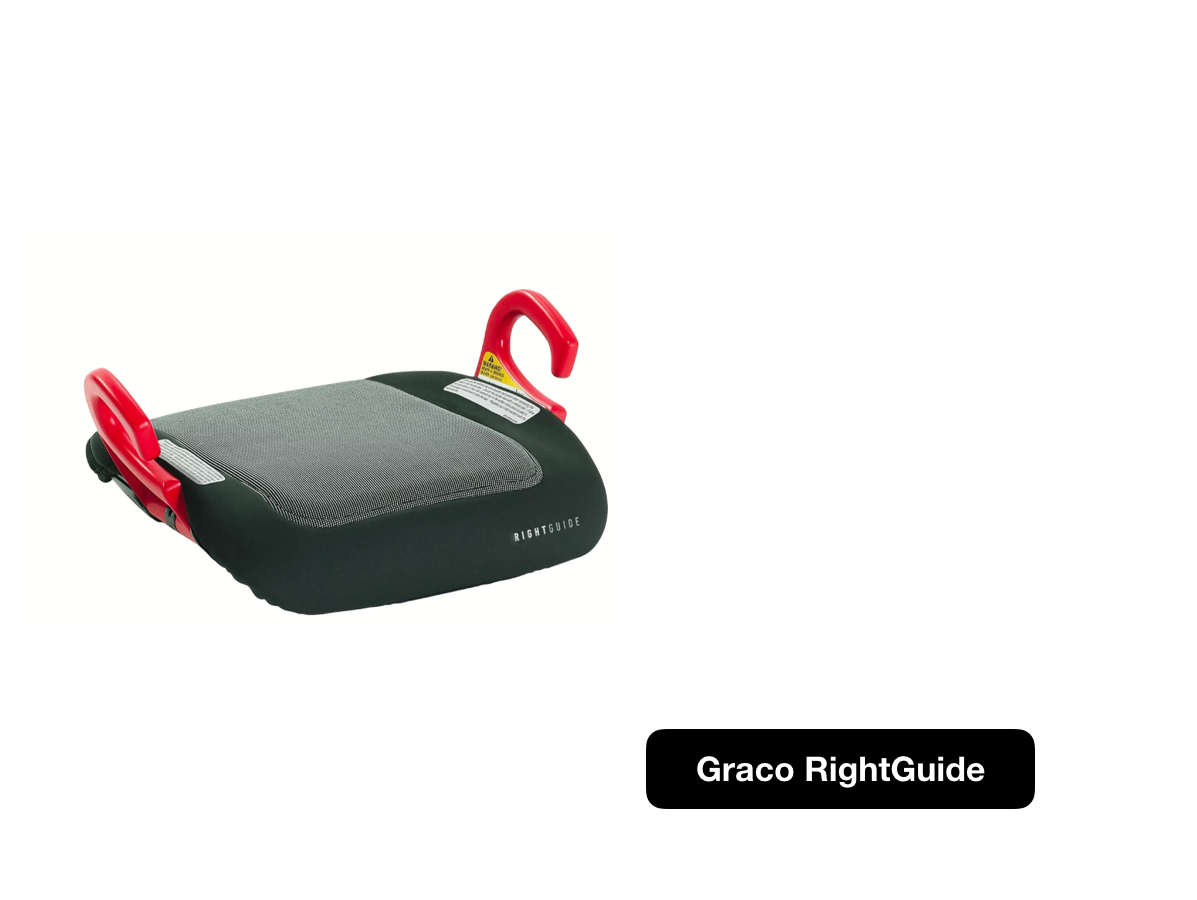
Graco Rightguide: We think this booster is fabulous! It weighs just 1.8 pounds, is super slim (you can easily fit 3 of them in a canvas market bag or backpack) and fits smaller and bigger kids really well. While it’s the narrowest backless booster on the market, it fits wide kids really well due to how the red belt guides can flare out. We’ve taken this booster everywhere and it’s just great. This video shows how easy it is to use!
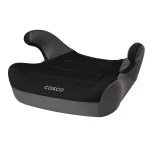
Cosco Rise & Cosco Rise LX: At $19 and 2.2 pounds, they’re cheap and lightweight. However, they’re bulky to carry because their flared arm rests prevent them from fitting snugly into many bags.
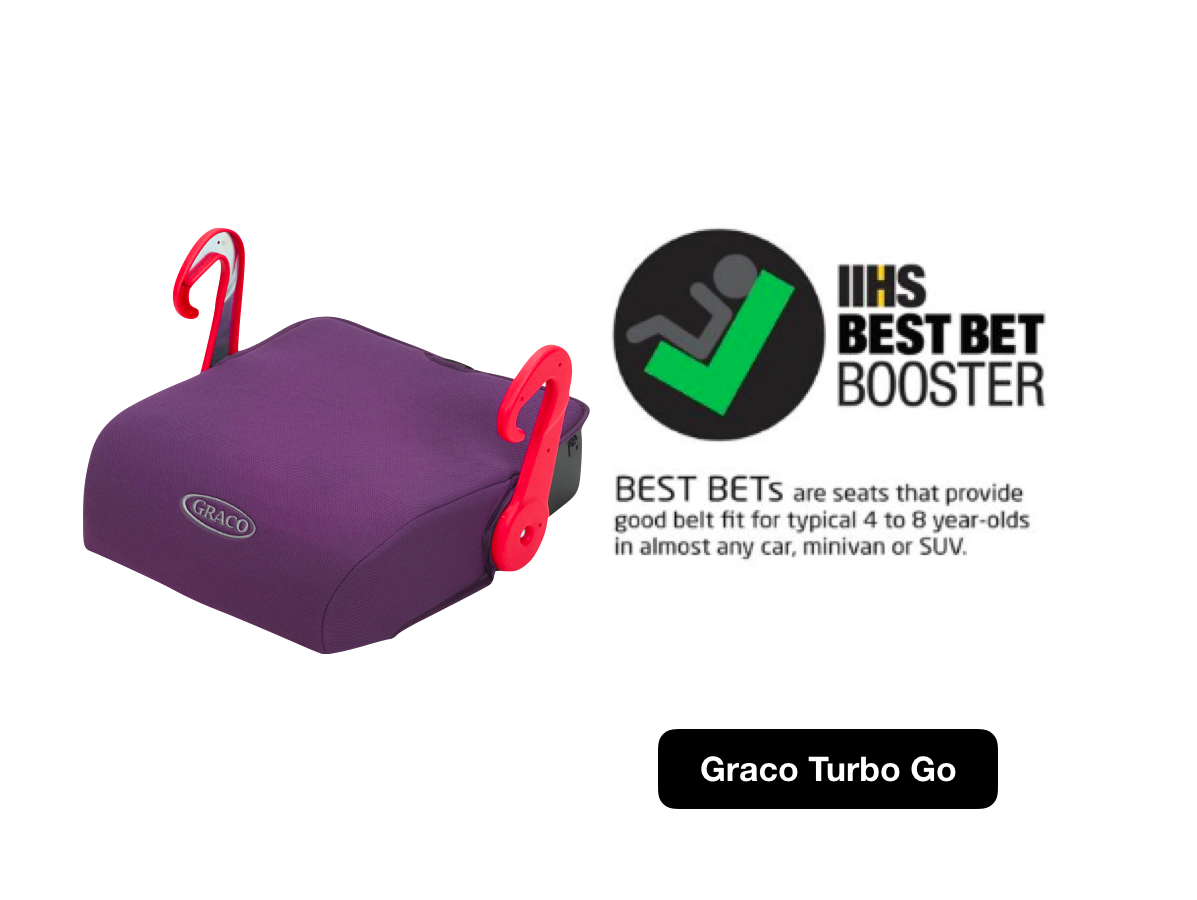
Graco Turbo Go: This little booster weighs 4 lbs, costs less than $20, and folds to fit in a larger backpack. The Turbo Go has a deep seat pan so it’s not ideal for the youngest kids who may slouch a little to get their knees to bend over the edge (slouching is dangerous in the car). But it’s fabulous for older kids who want better support for their legs. (Note: Make sure not to confuse this with other Graco Turbo products, which are different).
A note about our recommendations: You might be wondering why we aren’t recommending some of the popular travel boosters – some are foldable, some inflatable – and vests you see recommended on other sites. We attend the leading research and technical conferences in the US an Europe every year and based on research we have seen presented in the US (ACIP) & Germany (PoCC), we are recommending that kids who need a booster use one that is rigid and routes the lap belt in a straight path – and does not pull the lap belt down and then have it travel back up. Our recommendations above are for travel friendly boosters that meet both of these criteria and in our experience position the seat belt well on a variety of kids.
We are a reader supported site. We earn an affiliate commission when you buy through our links.
FTC Disclosure: Affiliate links are included in this page. No monetary compensation was provided, however some of the reviewed products were supplied by the manufacturer or distributor to help facilitate the review. All opinions are those of The Car Seat Lady, LLC.
